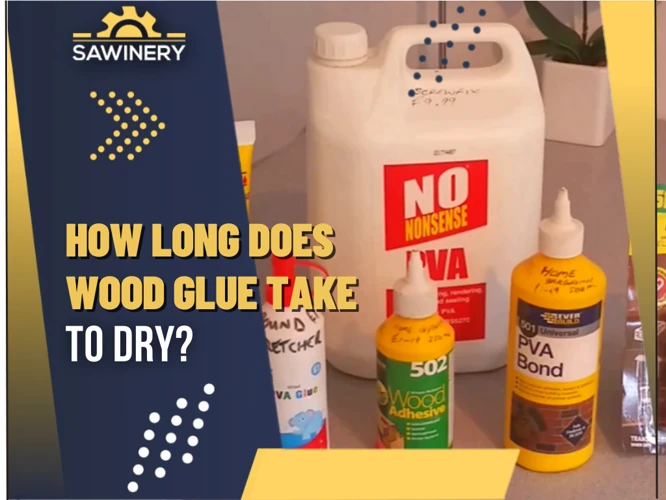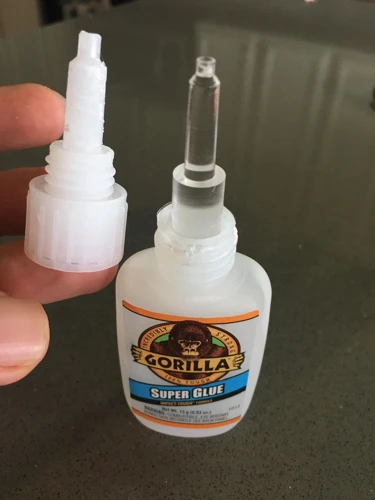Super glue has become a household staple for repairs, crafts, and quick fixes. This powerful adhesive is renowned for its strength and versatility, capable of bonding a variety of materials with remarkable tenacity.
What Is Super Glue?
Super glue, a common term for cyanoacrylate adhesive, is a fast-acting, strong bonding agent used in numerous applications. Its molecular structure enables it to rapidly polymerize in the presence of water, forming a sturdy bond between surfaces.
How to Use Super Glue
Applying super glue entails precision and care. Clean the surfaces to be bonded, apply a small amount of adhesive, and firmly press the items together for a brief period. For optimal results, distribute the glue evenly and avoid excessive application.
Super Glue Tips and Tricks
- Store upright in a cool, dry place to extend shelf life.
- Use in a well-ventilated area to avoid inhalation of fumes.
- Always cap tightly after use to prevent the glue from drying out.
The Science Behind Super Glue Drying Time
The efficacy of super glue is due in part to its rapid bonding capability. Understanding the science behind this process can help you make the most of this adhesive.
Factors Affecting Super Glue Drying
Several variables influence the drying time, including humidity levels, surface types, and amount applied. Each of these factors can either hasten or prolong the time it takes for super glue to set.
Cyanoacrylate Adhesive Drying Explained
Cyanoacrylate adhesive drying is not a traditional drying process but rather a chemical reaction. When exposed to minute amounts of moisture, the molecules in the glue react and form strong chains, solidifying the bond.
Super Glue Cure Time Explained
Many users confuse the terms ‘set time’ and ‘cure time’ when it comes to adhesives. While similar, they refer to different stages in the bonding process.
Super Glue Set Time vs. Cure Time
Set time is the initial phase where the adhesive begins to harden, typically ranging from a few seconds to minutes. Cure time, on the other hand, is the full period required for the glue to completely solidify and reach maximum strength.
Super Glue Bonding Time for Different Materials
The material being bonded can drastically change the super glue bonding time. Porous surfaces may absorb the glue, affecting the set time, whereas non-porous materials often result in a quicker bond.
Quick Drying Adhesives: How Fast Can Super Glue Dry?
When a fast fix is necessary, quick drying adhesives like super glue are the go-to choice. Their rapid action can be a significant advantage in many scenarios.
Super Glue Drying Time on Various Surfaces
Different substrates will react with super glue in unique ways. Metals typically yield a rapid bond, whereas plastics might require a slightly longer drying period.
Comparing Liquid and Gel Super Glues
Liquid super glues are often favored for their fast action and ability to infiltrate small gaps, while gel-based varieties provide a thicker consistency beneficial for vertical applications without dripping.
How to Speed Up Super Glue Drying
There are moments when even the swift action of super glue isn’t fast enough. Fortunately, there are methods to expedite the drying process.
Clean Surfaces for Faster Bonding
Freeing the surfaces of any debris or oils can significantly reduce the time it takes for super glue to adhere. A clean bond is not only quicker but also stronger.
Environmental Conditions and Their Impact
Environmental factors play a crucial role in adhesive performance. Higher humidity can improve the reaction speed, while warmer temperatures may reduce the drying period.
Using Accelerators and Other Techniques
Accelerators, or activators, are specially formulated chemicals that can hasten the polymerization process. Spraying a small amount on the surface before applying the glue can result in almost instantaneous bonding.
Troubleshooting Common Super Glue Issues
Even with its remarkable bonding power, super glue can sometimes pose challenges during application. Here’s how to manage some common issues.
How to Handle Excess Glue and Spillage
If you’ve applied too much adhesive or it has spilled, act swiftly. Wipe away the excess with a clean cloth and use acetone or nail polish remover to clean up any residue before it sets.
Safety Measures When Working with Super Glue
Always prioritize safety when using super glue. Protect your skin with gloves, and if any adhesive makes contact with your eyes or skin, follow the product’s emergency instructions immediately.
FAQs on Super Glue Drying Time
Let’s address some frequently asked questions to clear up any confusion regarding the use of super glue.
How Long Should I Wait for Super Glue to Dry?
The wait time for super glue to dry can vary, but a general rule is to allow at least 24 hours for full curing. For immediate handling, a few minutes should suffice.
Can I Use Super Glue on All Materials?
While super glue is versatile, it’s not suitable for all materials. Test a small area first or consult the manufacturer’s guidelines to avoid damage or weak bonds.
When working on various projects, understanding the drying time for different adhesives can be crucial to ensure the best results. If you’re using super glue, you might be wondering about its drying time compared to other adhesives. For a comprehensive look at drying times, check out our articles on how long glue takes to dry in general, and more specific types such as how long it takes for PVC glue to dry, and how long hot glue needs to dry. Understanding these differences can help you plan your projects more effectively and avoid any sticky situations!
What Are the Longest and Quickest Drying Adhesives?
Epoxy resins are among the longest drying adhesives, often requiring hours to cure. Cyanoacrylate adhesives, like super glue, are among the quickest, setting in seconds to minutes.



